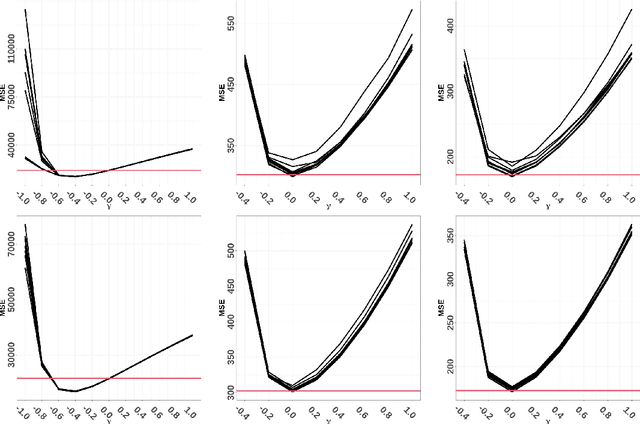Christophe A. N. Biscio
RIS-Assisted High Resolution Radar Sensing
Jul 16, 2024Abstract:This paper analyzes monostatic sensing by a user equipment (UE) for a setting in which the UE is unable to resolve multiple targets due to their interference within a single resolution bin. It is shown how sensing accuracy, in terms of both detection rate and localization accuracy, can be boosted by a reconfigurable intelligent surface (RIS), which can be advantageously used to provide signal diversity and aid in resolving the targets. Specifically, assuming prior information on the presence of a cluster of targets, a RIS beam sweep procedure is used to facilitate the high resolution sensing. We derive the Cram\'er-Rao lower bounds (CRLBs) for channel parameter estimation and sensing and an upper bound on the detection probability. The concept of coherence is defined and analyzed theoretically. Then, we propose an orthogonal matching pursuit (OMP) channel estimation algorithm combined with data association to fuse the information of the non-RIS signal and the RIS signal and perform sensing. Finally, we provide numerical results to verify the potential of RIS for improving sensor resolution, and to demonstrate that the proposed methods can realize this potential for RIS-assisted high resolution sensing.
Multi-Sensor Multi-Scan Radar Sensing of Multiple Extended Targets
Oct 13, 2023

Abstract:We propose an efficient solution to the state estimation problem in multi-scan multi-sensor multiple extended target sensing scenarios. We first model the measurement process by a doubly inhomogeneous-generalized shot noise Cox process and then estimate the parameters using a jump Markov chain Monte Carlo sampling technique. The proposed approach scales linearly in the number of measurements and can take spatial properties of the sensors into account, herein, sensor noise covariance, detection probability, and resolution. Numerical experiments using radar measurement data suggest that the algorithm offers improvements in high clutter scenarios with closely spaced targets over state-of-the-art clustering techniques used in existing multiple extended target tracking algorithms.
Statistical learning and cross-validation for point processes
Mar 01, 2021



Abstract:This paper presents the first general (supervised) statistical learning framework for point processes in general spaces. Our approach is based on the combination of two new concepts, which we define in the paper: i) bivariate innovations, which are measures of discrepancy/prediction-accuracy between two point processes, and ii) point process cross-validation (CV), which we here define through point process thinning. The general idea is to carry out the fitting by predicting CV-generated validation sets using the corresponding training sets; the prediction error, which we minimise, is measured by means of bivariate innovations. Having established various theoretical properties of our bivariate innovations, we study in detail the case where the CV procedure is obtained through independent thinning and we apply our statistical learning methodology to three typical spatial statistical settings, namely parametric intensity estimation, non-parametric intensity estimation and Papangelou conditional intensity fitting. Aside from deriving theoretical properties related to these cases, in each of them we numerically show that our statistical learning approach outperforms the state of the art in terms of mean (integrated) squared error.
 Add to Chrome
Add to Chrome Add to Firefox
Add to Firefox Add to Edge
Add to Edge